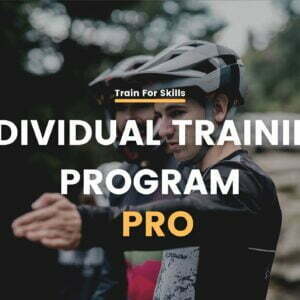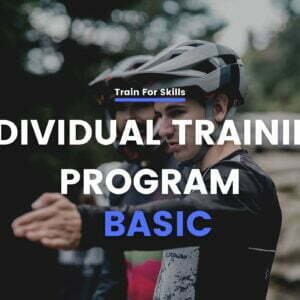How to plan your training? As athletes, we often face this question especially during the off-season when we have more time to train. If we don’t have basic knowledge, information found on the Internet can only bring chaos to our thinking. In this article, I will present the most important points to help you plan your training. Prepare a notebook for notes, a pen and get to work!
Why do you need to have a plan?
Before we get into specifics, you need to know why a training plan is so important. First of all, a well-designed workout is something that will bring you closer to your athletic goal. It will help you ride faster, give you more fun, reduce the risk of injury and allow you to be a better rider. Second, the training plan is an intermediate goal that we want to achieve and stick to it. Its implementation and visible progress will motivate you to take action. Third, a poor plan is almost always better than no plan at all.
One of the biggest mistakes athletes and coaches make is starting to put together a training plan by selecting exercises. In fact, exercise selection is one of the last steps we should take.
The planning of training should be preceded by a thorough analysis of the sport and a determination of what demands it places on the athlete. The athlete should then perform fitness tests, which will later allow the selection of appropriate exercises and methods in training. Knowing the fitness level, the requirements that MTB places on the rider and the goal, we can set training periods and get down to training details such as the selection of exercises, methods and training parameters.
- Needs analysis
- Assessment of sport-specific effort and movement
- Areas of the body prone to injury
- Fitness tests
- Goal
- Sports goal
- Training goal
- Periodization
- Number of trainings per week (time availability)
- Type of periodization
- Division of the training period into training phases
- Selection of exercises
- Strength training
- Endurance training
- Training parameters
- Intensity
- Volume (number of series and repetitions, time)
- Rest breaks
- Training methods, progression, monitoring
- What training methods will we use in training?
- What form of progression will we make?
- What tools will we use to monitor fatigue and progress?
Discipline analysis
Mountain biking is a very demanding sport both in terms of strength, conditioning and psychology. Each type of cycling will prioritize slightly different abilities. MTB marathons are a sport in which long aerobic endurance and technical skill play a major role. Downhill is a discipline with a very intense nature of effort, where we have to deal with a single usually 2-4 minute technical descent. In this case, power and glycolytic strength will be very important. Enduro, on the other hand, is a combination of long time endurance as well as glycolytic efforts in a format of repeated descents (e.g. 4×3-15 min). In addition, in Enduro and DH there is a very high speed of descent, which raises the intensity of the effort by higher loads acting on the body and the continuous focus of the rider.
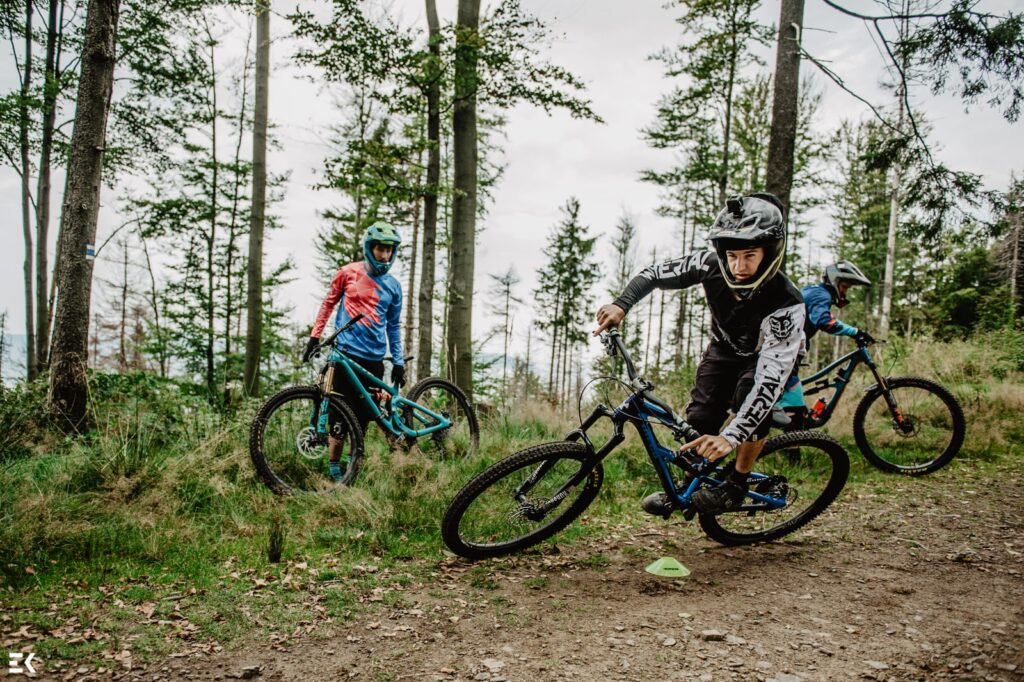
Knowing the types of muscle strength and basic energy systems, we are able to determine what the sport requires of us. Below is a sample Enduro analysis and key points for a training program:
Needs analysis for Enduro MTB
- Movement analysis:
- Closed kinematic chain, body work mainly in the sagittal and transverse plane, position of continuous flexion at the hips, partial flexion and extension of the knee, isometric tension in the lower limbs, upper limbs and back, strong grip engagement
- Prime movers:
- Hips + lower limbs in cooperation with arms
- Strength requirements:
- Lower body: pushing pattern (pedals)
- Upper body: push pattern and pull pattern (steering wheel)
- Maximum force: takeoff from the gate and acceleration
- Power: Takeoff from the gate and acceleration, change of direction
- Speed and agility: balance, change of direction and position on the bike
- Muscular endurance: quadriceps of the thigh, extensors of the thigh, forearms and hands, mainly isometric effort plus oscillatory work
- Energy systems:
- Downhill: mainly glycolytic system (high concentration of lactic acid in the blood)
- Long climbs >2 min: aerobic system as strength endurance
- Sprints: ATP-PC system
- *Each of the 3 types of energy systems contributes to each effort, but in different proportions. The proportion of involvement of each energy pathway depends on the intensity and duration of the exercise!
- Injuries:
- The most common areas of injury in MTB/Enduro/DH are: shoulder joint (damaged ligaments, broken collarbone, dislocations), wrist (fractures and dislocations), head injuries (concussion), chest injuries (broken ribs) and others.
- Injuries most often occur through accident and acute injury. Less frequently, chronic overload.
- Fitness test:
- ROM (range of motion), mobility and stability tests. We check flexion, extension and rotation in major joints, as well as how to perform basic exercises such as the squat, push-up or pull-up. We pay attention to the range of motion, control of movement, and technique of exercise execution.
- Strength tests. We test the strength of the lower extremities in bilateral (1-5RM Back Squat) and unilateral (1-5RM RFE Split Squat) patterns. Similarly, upper limb strength for the push (1-min Max Reps Push Ups) and pull (Max Reps Pull Ups) patterns. Trunk strength and stability in anti-rotation exercises.
- Performance tests. Depending on the target discipline and available equipment, we can perform FTP/FTHR test, Critical Power (5 min, 1 min, 30s, 10s) or specific tests on a rowing ergometer, ski-erg or bike.
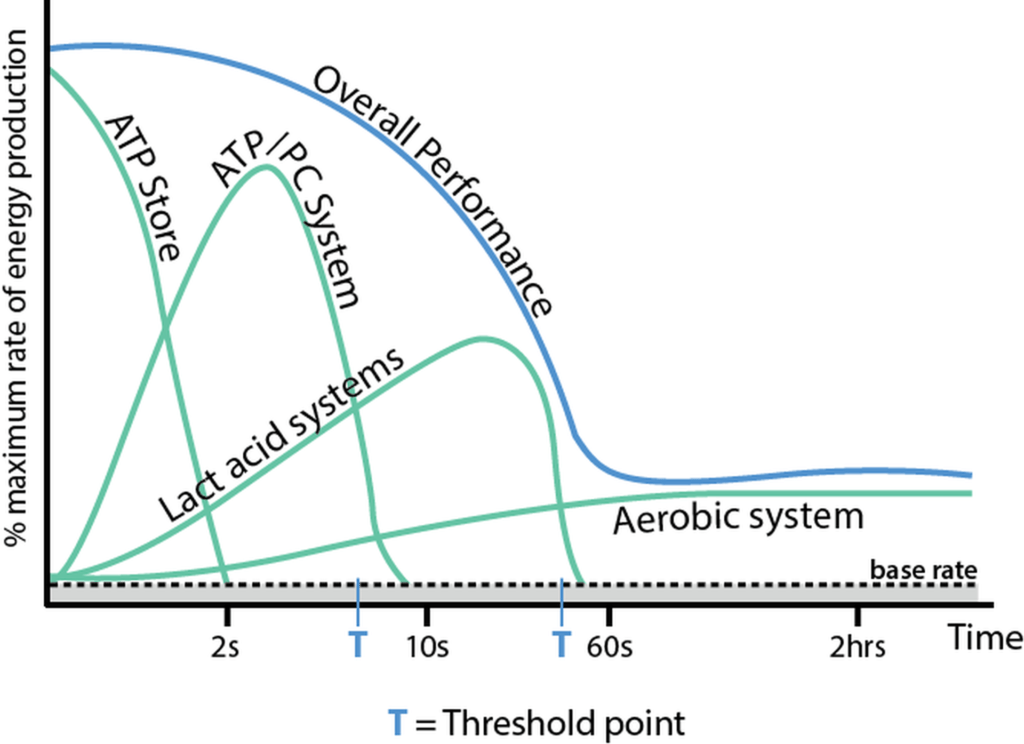
Goal
- Example sports goal: start in all EWS and finish top30 overall
- Sample training goal: improve lower limb strength (5RM RFE Split Squat), improve FTP [W/kg], reduce resting heart rate from 60 bpm to <50 bpm, increase HRV.
Periodization
Let’s assume that a rider can do training 4 times a week, and the weekend is dedicated to rest or Enduro riding. During the preparation period, we schedule 2 strength training and 2 endurance training sessions per week. During the start period, 1-2 strength training, 1-2 endurance training plus trips and races.
The preparation period lasts about 6 months (from November 1 to May 1). The first 2 months will be devoted to general preparation, basic strength and motor control. We will plan the next four months of training on a conjugate periodization basis. This means shaping each ability (strength, power, endurance) in parallel in a single micro-training cycle. In the initial period, more emphasis will be placed on maximum strength to build capacity for the development of further capabilities. The closer we get to the season, the more priority we will place on Enduro-specific strength. In practice, this means muscular endurance and power endurance.
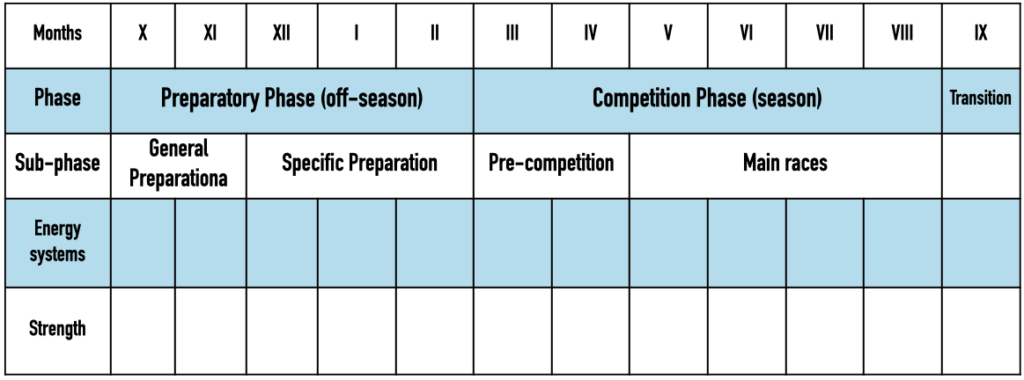
Selection of exercises
The choice of exercises should be guided by the specifics of the movement we perform while riding (discipline analysis), as well as fitness needs, which are individual for each person (fitness tests). We know that the quadriceps of the thigh and the extensors of the back are the most stressed muscle groups during the ride due to the body position during the descent and isometric work. For this reason, our training should include exercises that will strengthen this position using isometric exercises. In addition, if we know that the limiting factor is grip strength and endurance, we also need to add this element to the training. One way to select exercises and sequence them is through movement patterns, which help maintain structural balance.
Selection of exercises in strength training
In strength training, it is worth choosing a few core exercises in which we can systematically introduce progression. For the lower extremities, it could be a Split Squat Isometric Hold and a gradual increase in load, followed by a progression to an Oscilating RFE Split Squat. For the upper extremities, we can use Bench Press and Pull Ups, which we will modify during the cycle. The strength training program is also worth including unilateral exercises, that is, asymmetrical movements using one leg or arm, such as Split Stance Single Arm DB Row. This increases the involvement of stabilization and core muscles. Accessory exercises also largely depend on our weaknesses that we want to improve such as deficits in the stability of particular joints or grip strength. For everyone there will be different exercises and methods depending on individual needs.
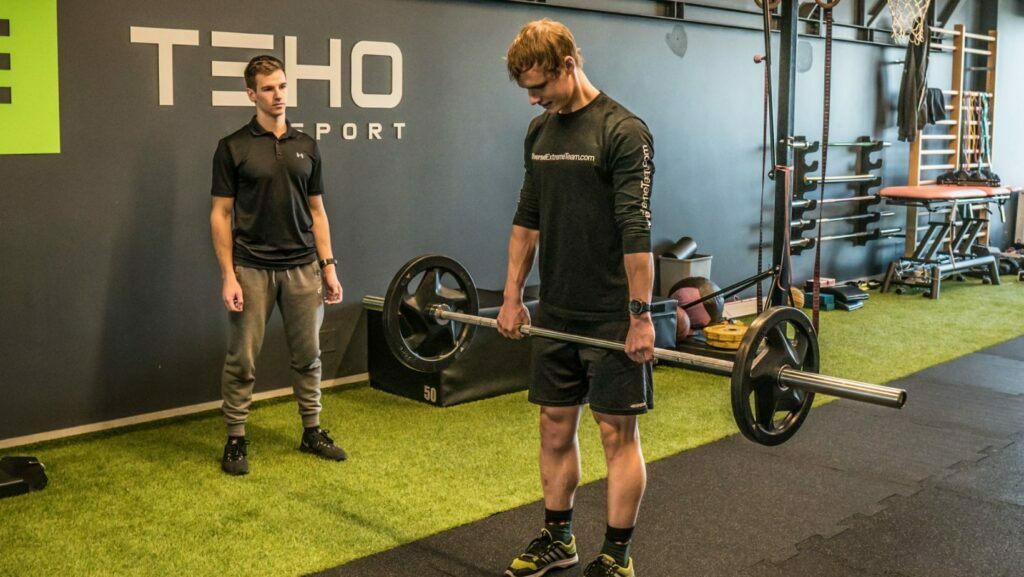
Selection of exercises in endurance training
The choice of exercises and methods of endurance training depends on its form. If we do the workouts on a bike or trainer, we can establish specific training units aimed at developing aerobic and anaerobic endurance using power or heart rate zones. The simplest and safest solution is to start our preparation with low-intensity workouts that improve our aerobic capacity, and then move to workouts around our lactate threshold.
After a period of 6-8 weeks, we can introduce regular high-intensity workouts that shape aerobic power and anaerobic endurance. Then we will plan the workouts in an interval and repetition format. If you ride mainly Downhill instead of a trainer and classic riding, you can add elements of endurance training to your gym or replace the trainer with a rowing ergometer or Air Bike. The principles of progression will be the same as for cycling training. The choice between integrated training and split-bike and gym training depends mainly on time possibilities and available training equipment. With 4 or more hours per week for training, it is worth scheduling strength and endruance workouts on separate days. On the other hand, if the snow outside the window doesn’t encourage you to ride, and you don’t have a trainer, a good option would be to combine a strength unit with a metabolic part. Remember, however, that more important than the form of training itself are regularity and a reasonable training program.
Training parameters
Training parameters are information detailing how many repetitions and series to perform, what weight to use and how long the rest break should be.
Intensity and volume
Intensity in strength training mainly refers to % of maximum weight and speed and commitment to movement. Volume, on the other hand, refers to the number of sets and repetitions in a workout. When starting a training period, I suggest not going crazy with the load, and instead focus on body control, full range of motion and relatively slow repetitions. We can increase the intensity from month to month by adding weight and/or increasing the speed of the movement. For example, the first stage could be a Split Squat with a slow 4-second eccentric phase for 4 sets and 5-8 repetitions. Then the next step would be to increase the load and perform the Split Squat in a 5×5 protocol. Closer to the season, we can turn this into a Split Squat Jump with weight, as a progression to a more dynamic and specific exercise for Enduro.
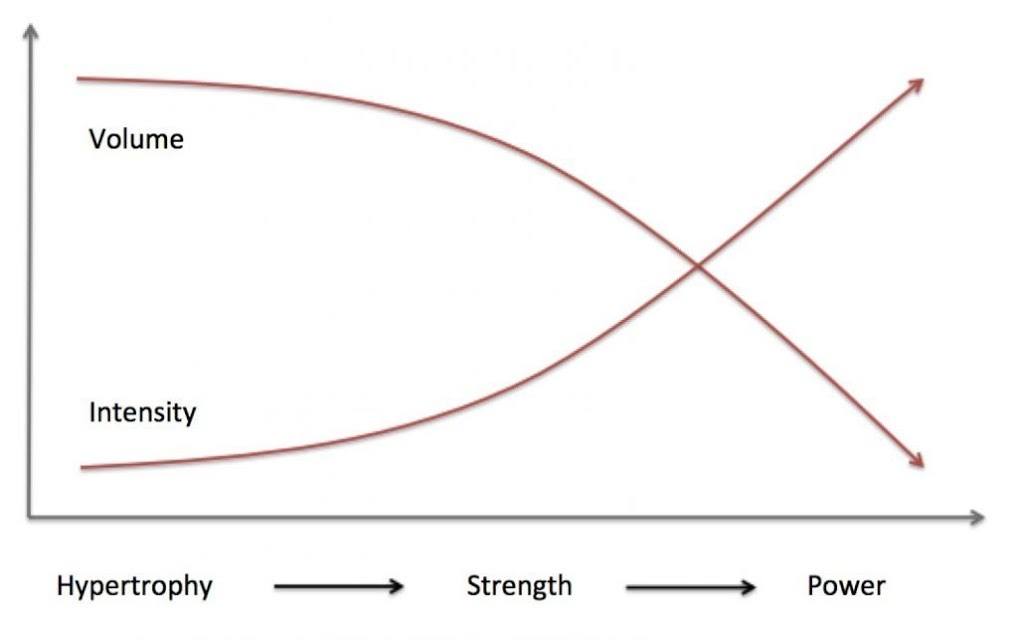
Rest breaks
At this stage, we also need to establish rest intervals between sets in each workout. The length of rest is very important, because it determines, among other things, what adaptations we induce in our body. In muscle endurance training, a rest of less than 60 seconds is recommended, in hypertrophic training 1.5-2 min, and in strength training 2-5 min rest between sets.
Training parameters in endurance training
Similarly, in performance training, intensity is denoted by %FTP (threshold power), %FTHR (threshold heart rate) or %HRmax (maximum heart rate). Depending on which parameter you use, a higher percentage will mean a more intense workout. Volume is the number of repetitions and sets or total training time.
As I mentioned earlier, Enduro mainly consists of repeated intense efforts of several minutes (descents) punctuated by less intense efforts that do not count towards the score (uphill ride, commutes, etc.). For this reason, training in preparation for Enduro should be focused on building solid aerobic endurance and developing glycolytic capacity and power, which is crucial for measured runs. This strategy will improve resistance to lactic acid build-up in the muscles and allow the rider to go longer and faster.
Well-designed strength and conditioning training combined with plenty of off-road riding and technique will adequately prepare an athlete for riding and competition.
Training methods, progression and monitoring
The final piece of the puzzle is choosing the right training methods, method of progression, and monitoring fatigue and progress.
Training methods
Training methods are a specific way of performing exercises or arranging them in a training unit. Depending on the training phase you are in and what kind of adaptation you want to achieve, you can use different training methods. Here are some examples of the methods I use with my Enduro and Downhill athletes:
- Tempo – varying the timing in each movement phase of the exercise. E.g.. Back Squat, Tempo:41X1 means 4 sec down, 1 sec pause in lower position, X is fast and dynamic movement up, 1 sec in starting position.
- Isometrics – exercises using only isometric contraction. A great method to increase strength and motor control with minimal damage to muscle fibers.
- super sets – a method that increases intensity and density in a training unit. It involves combining exercises and performing them alternately in one super set.
Progression
Progression is a necessary element of a training program if we want to see the results of our work. It should be based on the 5 training principles. We most often associate it with systematically adding weight to a barbell. On the other hand, this is only one way to increase the difficulty (progression) of an exercise. While in the strength-forming phase an ever-increasing load will be beneficial, at the beginning of the preparation period progression may be a simple change in exercise tempo or increased demands for stability. It is good to determine what direction we will want to go, but making changes and being flexible should also be possible.
There is a similar principle in endurance training as in weight training. Depending on the period in the season, we can choose a different way of progression. Typically, outside of the launch period, we work to increase volume and capacity for work. The closer we get to the season, the more we turn up the intensity and at the same time reduce the training volume. In this way, we still provide stimulation to the nervous and muscular systems, but do not lead to overtiredness of the athlete.
Monitoring
Training monitoring is one of the simplest activities, but unfortunately very often overlooked or misunderstood. For tracking progress and simply being aware of what you’re doing, all you need is a workout log where you record the weight, number of sets, number of reps and additional notes. We work with our athletes on a training app, so we have everything in one place, but a regular notebook will do for a start. In this way, we track the external load.
The second important element is the monitoring of internal load, that is, how our body responds to training. For this purpose, it is useful to measure resting heart rate or HRV (heart rate variability) if we have the ability. A higher resting heart rate (measured right after waking up) than normal may indicate that our body is not yet fully rested after the last workout or there is another external stressor. Higher HRV, on the other hand, says that the heart and nervous system are working properly. This indicator is a starting point that can determine the body’s stress tolerance, i.e. readiness to train.
There are many sports watches on the market today that make it easier to track fatigue and readiness for training.
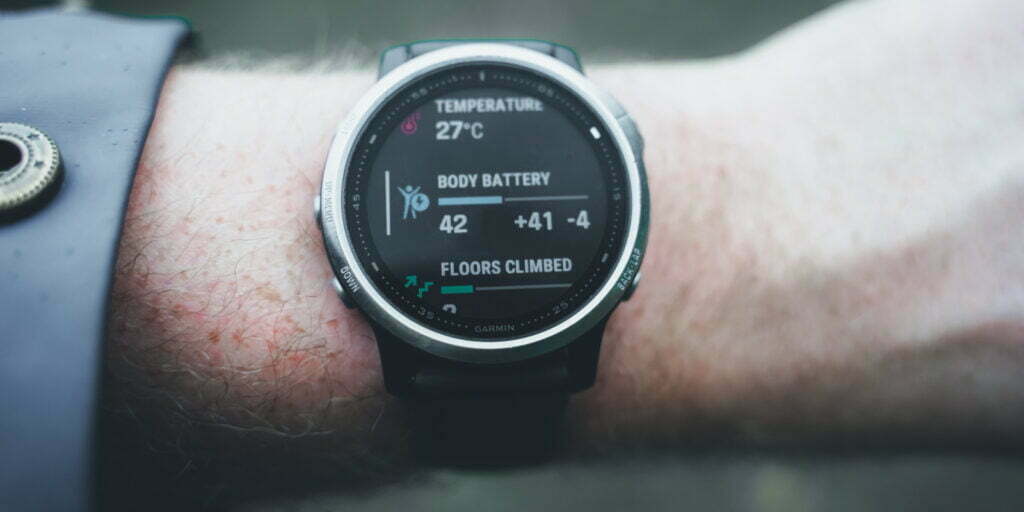
Summary
Well-planned training should take into account the specifics of the sport and the individual needs of the athlete. Knowledge of basic biomechanics and physiological processes allows the selection of appropriate training methods and forms for maximum results.

